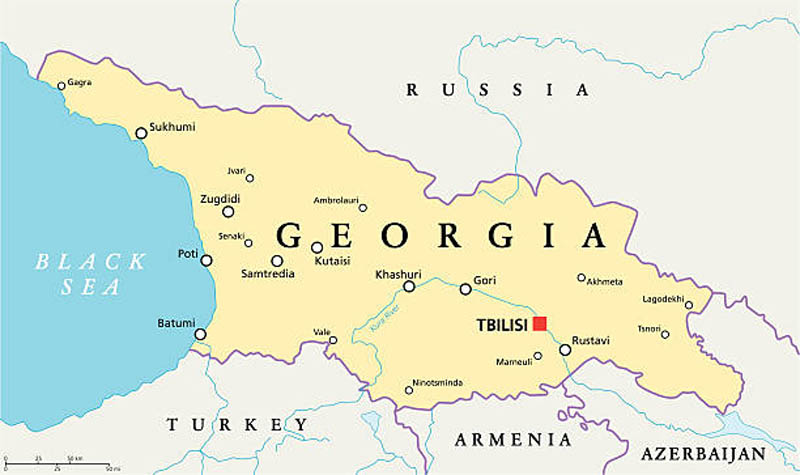
WHERE WE ARE
Georgia - the ancient country with more then 25-century of history is a bridge, between Europe and Asia. Georgia is bordered by the Russian Federation, Turkey, Armenia, Azerbaijan and the Black Sea.
Georgians call themselves Kartvelebi (ქართველები), their land Sakartvelo (საქართველო - meaning "a place for Kartvelians"), and their language Kartuli (ქართული). According to the ancient Georgian Chronicles, the ancestor of the Kartvelian people was Kartlos, the great grandson of the Biblical Japheth.
The terms Georgia and Georgians appeared in Western Europe in numerous early medieval annals. The French chronicler Jacques de Vitry and the English traveler Sir John Mandeville wrote that Georgians are called Georgian because they especially revere Saint George. Notably, the country has the five-cross flag, featuring the Saint George's Cross; the flag was used in Georgia from the 5th century throughout the Middle Ages.

GEORGIA OF LEGEND
There is an old legend that God saved Georgia for last. He had parcelled out all of the lands of the world to the different people, the Georgians were, of course, late to the party, and there was nothing left for them. But God so enjoyed their toasting and revelry that he gave them the section he had reserved for himself, a fertile valley of vineyards and orchards.
Every culture grows from rich bedrock of stories - ours is no exception. Georgia is the second country to convert to Christianity (in 337 AD) and has developed its special brand of Orthodox Christianity from that day. The frescos in our many fine churches are unique to us and represent the flowering of an unusually strong artistic culture with a powerful love of colour, story and myth. But even before Christianity arrived the myths centred on Georgia stand out as bedrock of human pre-history.
Prometheus - the Greek God who was chained to Mt Caucasus (commonly believed to be Mt Kazbek) in punishment for stealing fire and giving it to humankind.
Amirani - the Georgian demi-god with strong similarities to the Promethean legend, which some posit as the forerunner to the Greek.
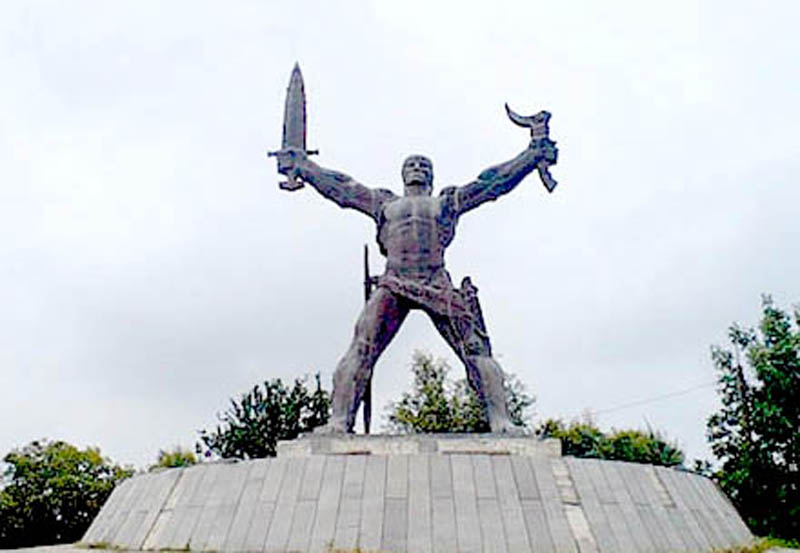
Jason and the Argonauts - the Greek hero who sailed to Colchis (western Georgia) in search of the Golden Fleece; finding it along with the infamous Georgian princess Medea, a renowned healer from whom the word medicine comes. The story of the Odyssey describes Georgians as a rival civilization of great technological prowess and fantastic wealth.
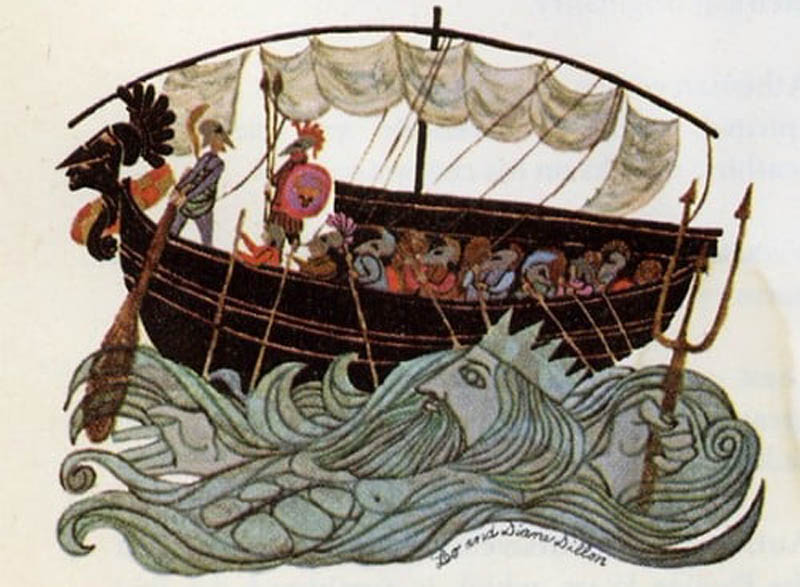
THE FIRST GEORGIANS: ARCHAELOGY
Georgia recently made world headlines with the startling discovery of the 1.8 million year old Dmanisi hominoids in the hills just south of Tbilisi. Providing the missing link in human evolution between Africa and Europe, it enables us to claim the first outbound tourists from Europe. You can visit the site where they were found and are exhibited and see. But other more historically recent discoveries - like the gold in Gonio by the Black Sea coast, or the figurines and jewellery at nearby Vani - continue to provide a wealth of new exhibits for our museums.
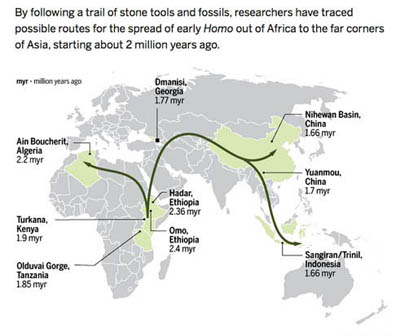
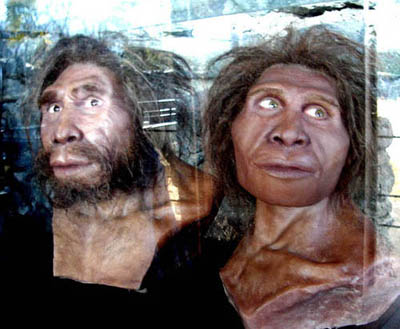

ARCHITECTURE & CHURCHES

Georgian Architecture in general is a fantastic landscape of watchtowers, hand carved balconies, and richly frescoed churches. Combined with a Mediterranean climate and a legendary hospitality, our buildings which seem torn straight from the fairy tales makes Georgia one of the unacknowledged marvels of the world. Indeed it can be regarded as the ultimate expression of our national heritage and our affinity, affection and skill with stone.
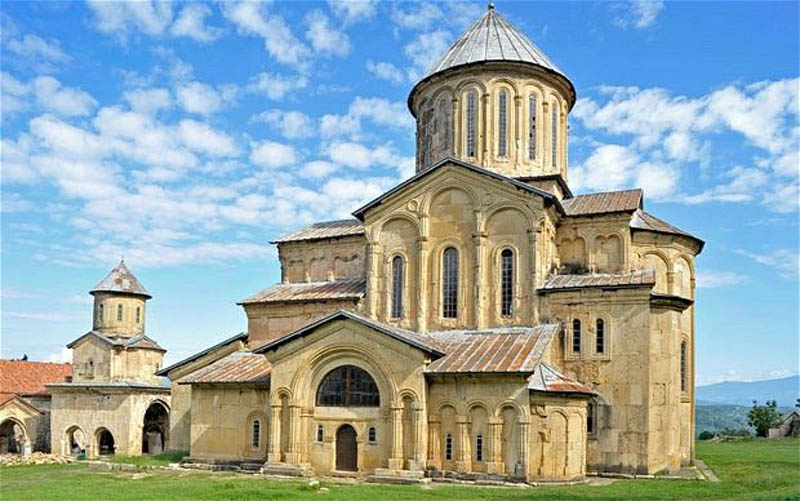
Tbilisi is well known for its unique cantilevered balconies of intricately carved wood which hang over the second floors of many of its buildings, and often hung over the old city walls as well. Painted in a wild variety of colours, from ochre to cinnamon, azure to white. The prototypical ‘Tbilisi house' is a blend of centuries blend of Georgian traditional with Russian classic.
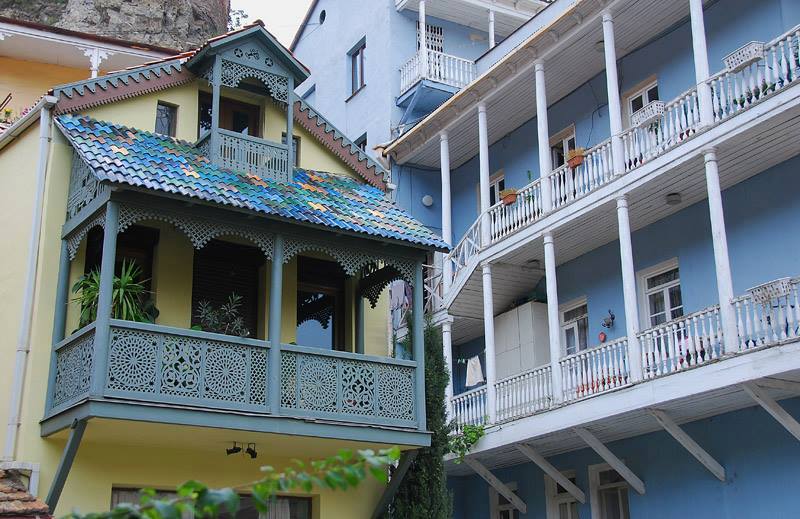
At one time it was said Tbilisi had a church at the end of every street. Although not quite so today, new churches are still being built, from the giant new Sameba Cathedral, to the hundreds of small chapels dotted around the city. But it is still the old churches like Sioni, Kashveti and Anchiskhati, that steal the show and capture the full feeling of what it's always been like to be Georgian.
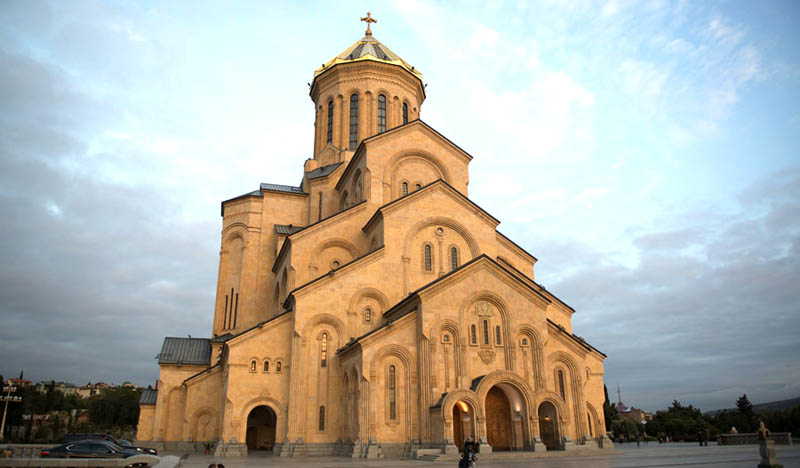
There is no better way to catch the inimitable atmosphere of Georgia's history than in its churches. These cupola-domed structures are found from one side our nation to the other. Perched on mountaintops high up in the Greater Caucasus, Mt Kazbegi, or carved into sandstone hillsides, as in Vardzia or David Gareji.

The walls are usually covered in frescos and frequently resound with the sounds of our polyphonic choirs. Stand in Tbilisi's Sioni Cathedral on a Sunday morning and experience the sounds of a religious tradition spanning nearly two thousand years. Visit the splendid Gelati complex near Kutaisi (Georgia's second city) and see a large cathedral covered floor to cupola-top with magnificent frescos and mosaics. Wind your way up into the remote mountain valleys of Svaneti and encounter superb 12th century frescos in the most far-flung churches, as well as several museums packed with elegant icons and treasures.
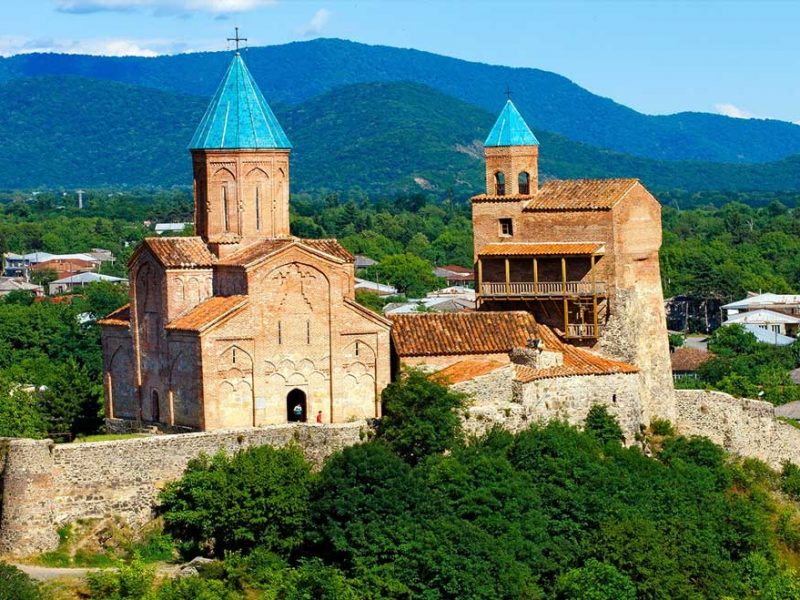
TBILISI - CAPITAL OF GEORGIA
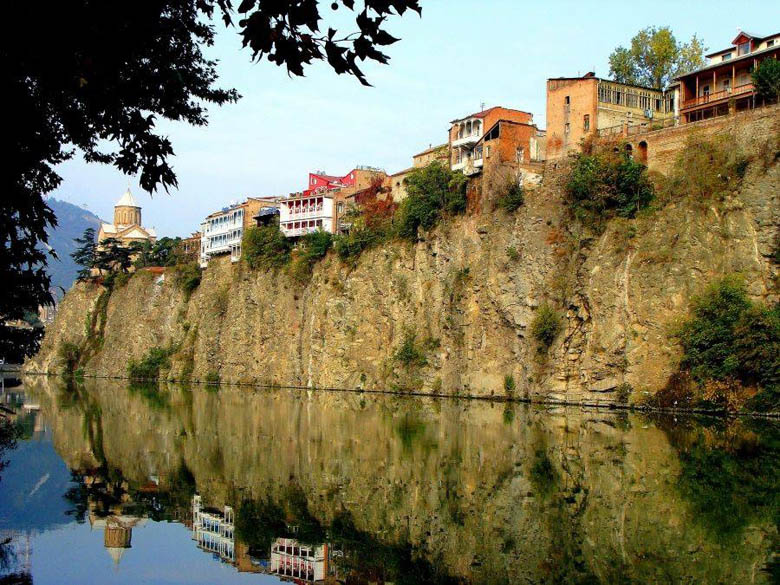
The Beautiful capital city of beautiful Georgia - TBILISI literally means Warm Spring. Founded in the 5th century AD by Vakhtang Gorgasali, the Georgian King of Kartli (Iberia), and made into a capital in the 6th century, Tbilisi is a significant industrial, social, and cultural center. The city is also emerging as an important transit route for global energy and trade projects. Located strategically at the crossroads between Europe and Asia and lying along the historic Silk Road routes, Tbilisi has often been the point of contention between various rivaling powers and empires.
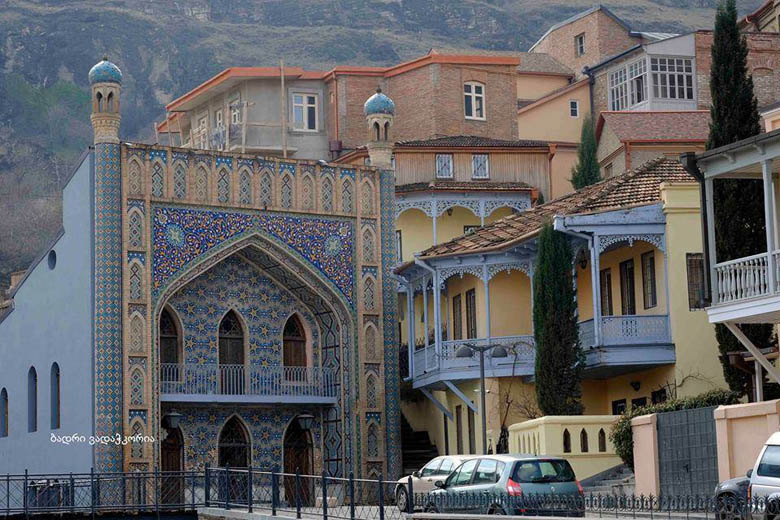
The history of the city can be seen by its architecture, where the Haussmannized Rustaveli Avenue and downtown are blended with the narrower streets of the medieval Narikala district.


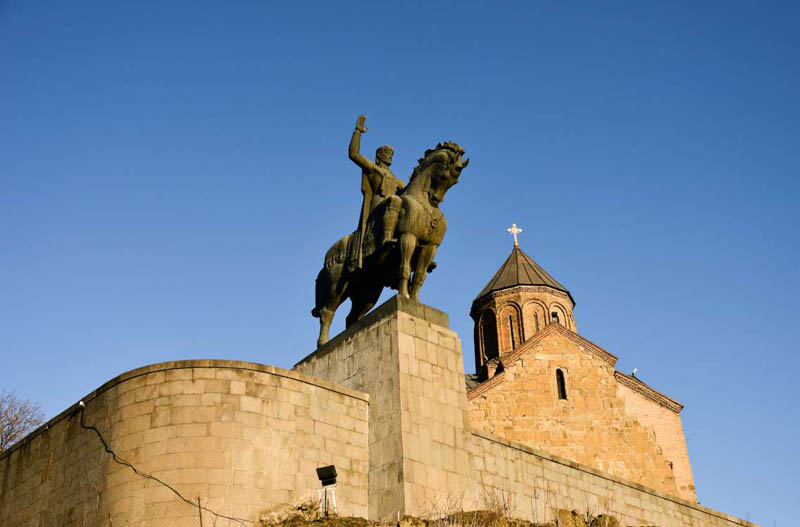
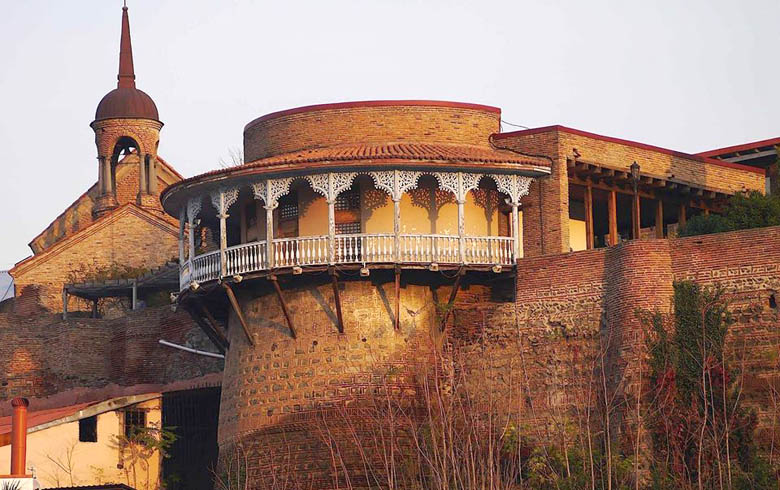
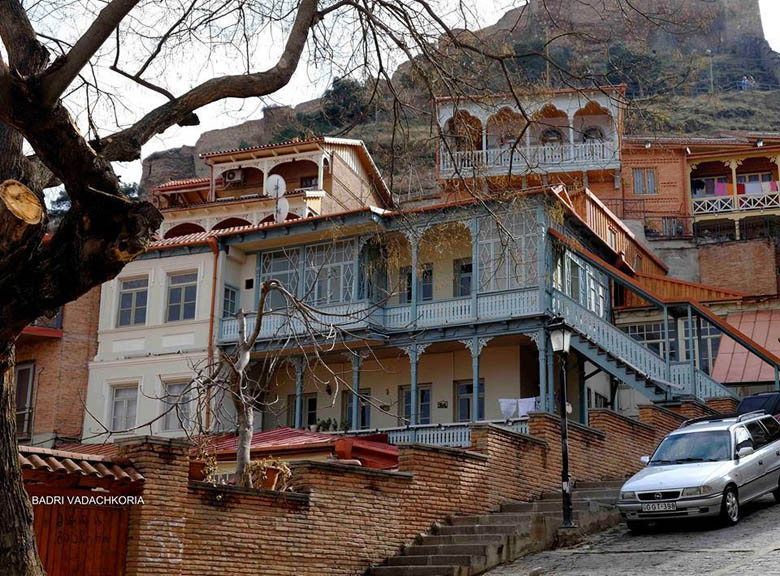

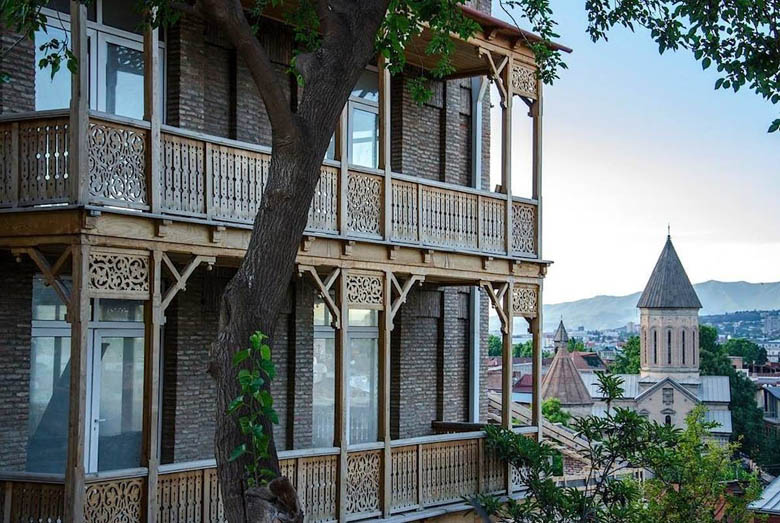
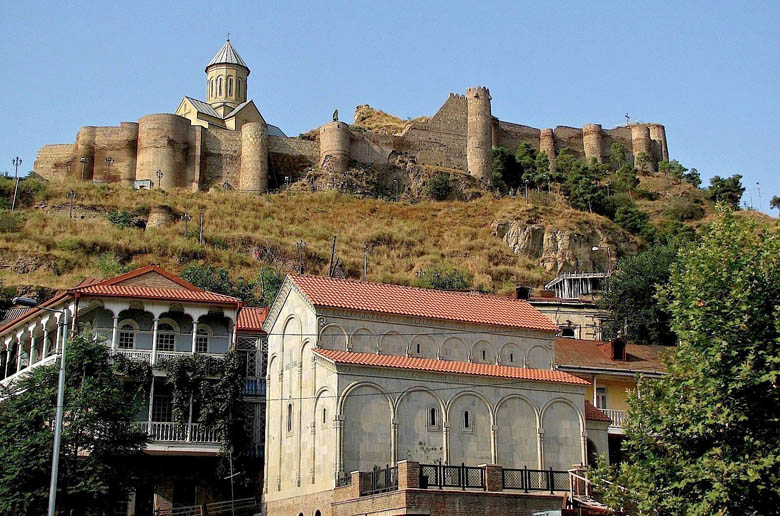
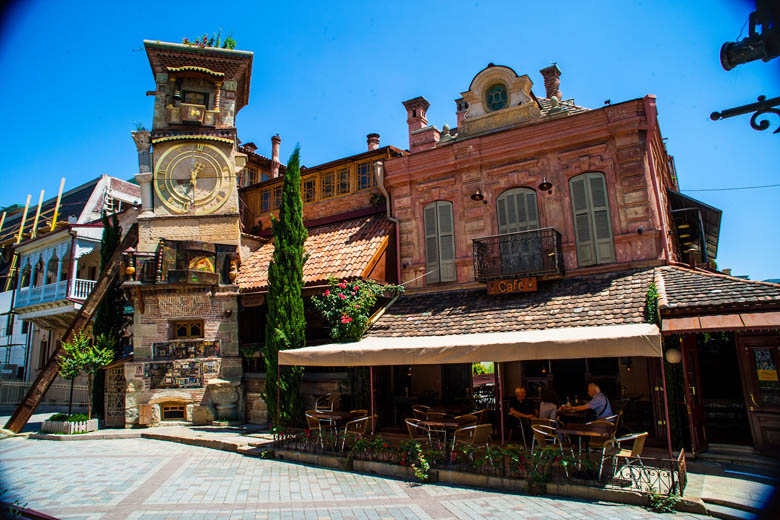
GEORGIAN CUISINE
"Every Georgian dish is a poem."
Alexander Pushkin
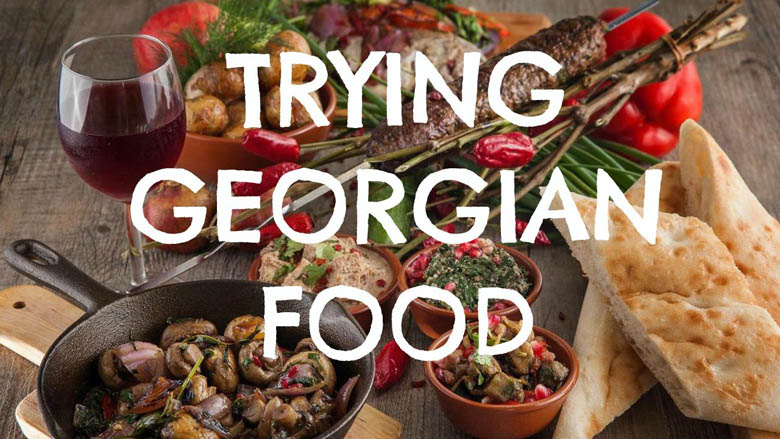
Georgia's rich and savoury cuisine is the natural extension of a fertile, mineral-rich landscape fed by the pure waters of the Caucasus Mountains. Due to the antiquity of the culture here it is hardly surprising Georgia has developed such a strikingly original cuisine. Not only is it a perfect accompaniment to the rich viniculture here, we make a point in showing it off to our guests in elaborate feasts we call "Supras".
Most of our food is organic, and the ingredients from our incredibly varied cuisine profit from the mild climate that provides fresh vegetables for three quarters of the year - and we have the best Tomato's you've ever tasted. Numerous aromatic wild mountain herbs give our dishes an uncommonly exotic aroma. Rich in walnuts, pomegranate, vegetable pates, organic fresh meats, wild herbs and love of garlic, our cuisine provides a superb accompaniment to the endless supply of wine.
By the way our food is not only wonderful it's cheap. You can easily eat a world-class meal, with wine, for less than the cost of a paperback book. You will never go hungry in Georgia, and with of our love of toasting you certainly won't go thirsty either.
Mtsvadi
Georgian barbeque, meat grilled to perfection over a grape vine-wood fire, with fresh pomegranate juice squeezed over it.
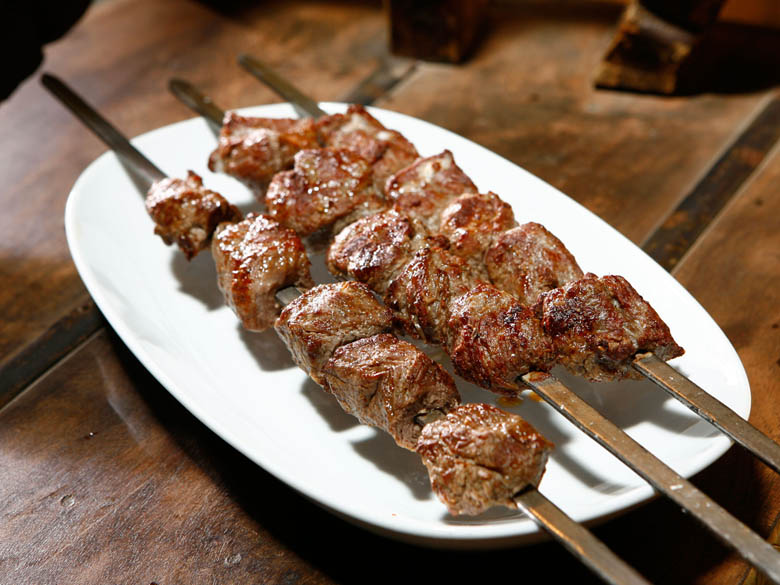
Khinkali
The Georgian National dish: juicy meat dumplings made to be eaten by hand, using a special technique that can be learned only here. Visitors end up craving this so much they make special trips back just to taste it again.

Khachapuri
Georgian cheese bread, appearing in a number of regional styles.
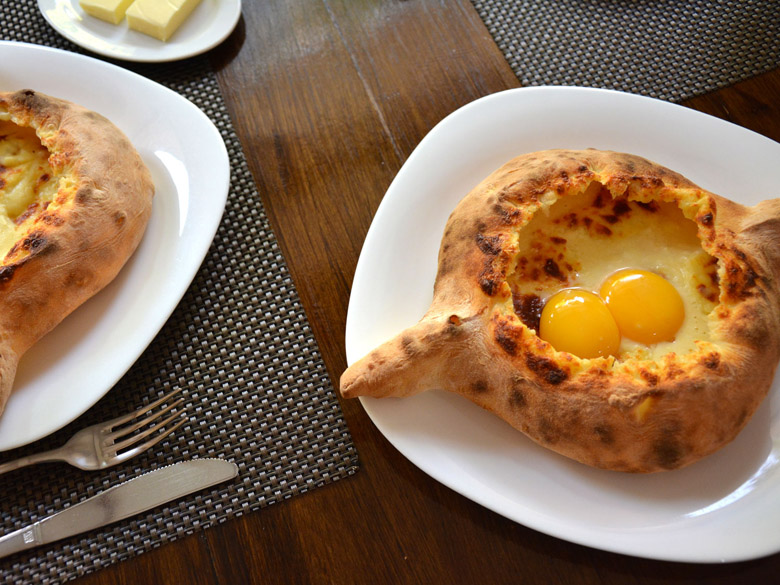
Lobiani
Bread filled with beans and aromatic spices.
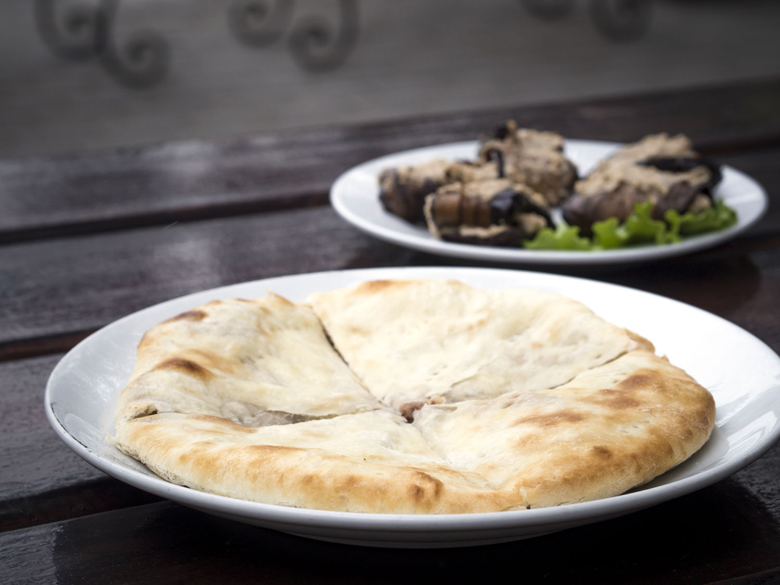
Chakapuli
It is made from onions, lamb chops, dry white wine, tarragon leaves, tkemali sauce (plum sauce), mixed fresh herbs (parsley, mint, dill, cilantro), garlic and salt.
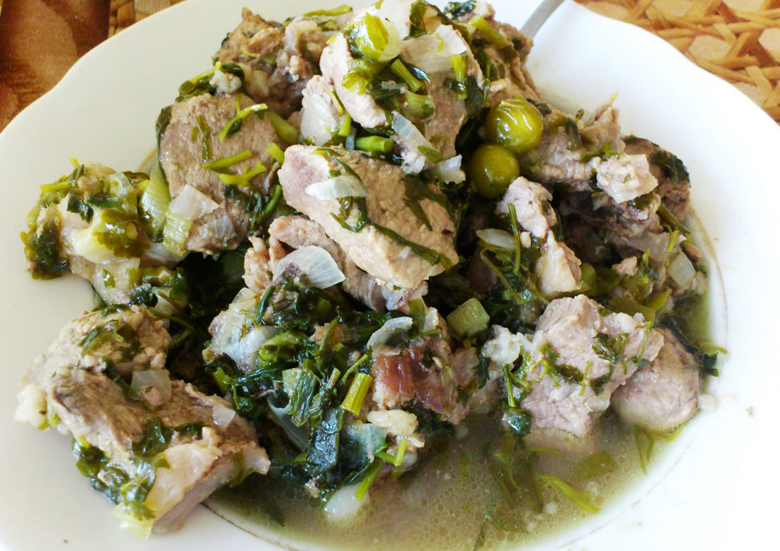
Lobio
Bread filled with beans and aromatic spices.
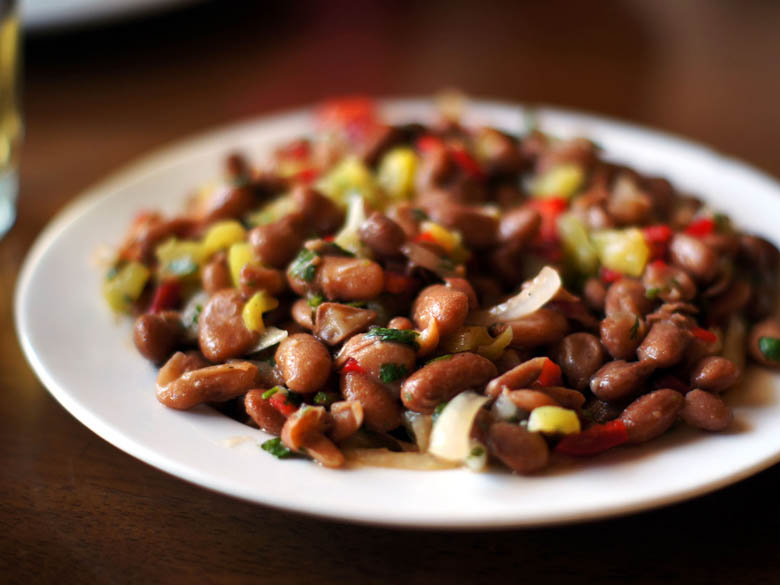
Ghomi
The Georgian equivalent of an Italian polenta. Crushed corn kernels to which cornflour is added, continually stirred, and cooked for a long time. Often served with slices of suluguni, cheese placed in the middle of the hot corn puree to melt. A familar taste for Americans from the South.
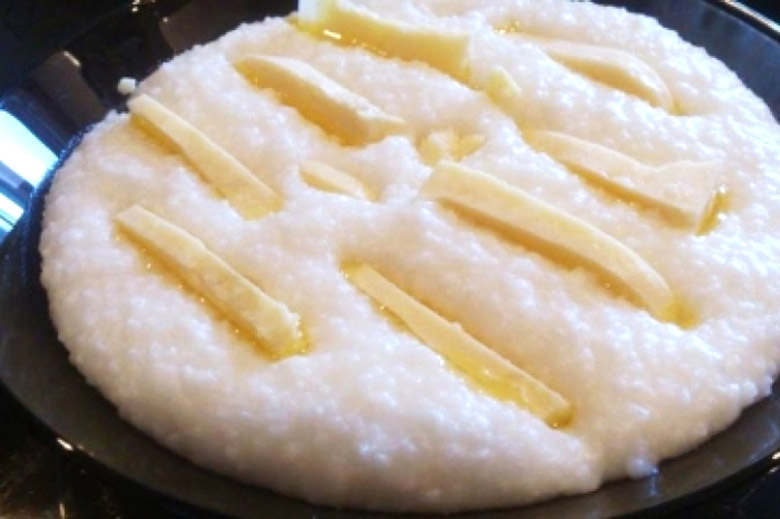
Mchadi
Cornbread. Can be small and thick fried in oil, or thin and wide with crunchy surface.
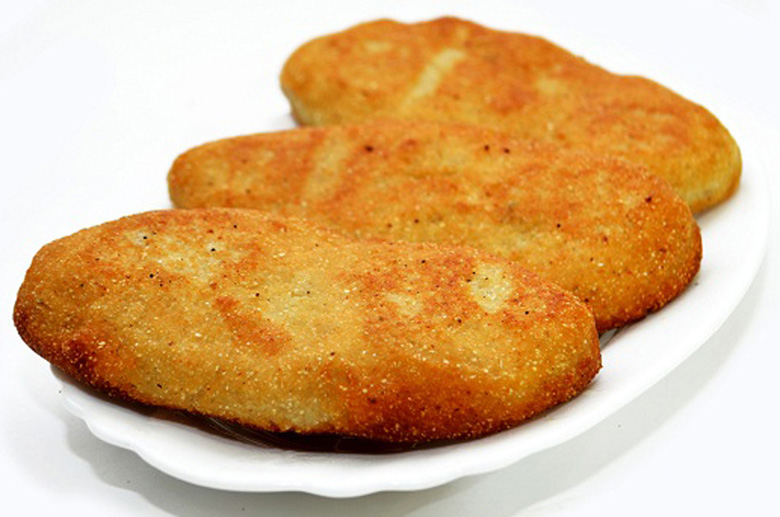
Churchkhela
A candy made from boiled grape skins and walnuts, sometimes combined with raisins. Never found in restaurants, but sold in village markets or along country roads. Walnuts are strung on a thread and dipped into a hot grape mixture, then hung to solidify.

GEORGIAN WINES

Georgia has been blessed with a perfect climate and geography that enabled people living here to cultivate some of the best types of grapes. Many people that appreciate a good wine are not aware that Georgia is a goldmine when it comes to wines. Wine has been made on the territory of this country since ancient times, this activity still being highly appreciated by locals even today. Best Georgian wines appeared in tops throughout the world, as wine connoisseurs appreciated the exciting tastes and flavors the wines from Georgia are bringing to the market. It is true that the wine production in Georgia is rather small, in comparison with the large producers, like France or Italy, but it holds a great potential that is worth exploring in this domain.

You should definitely some of the best Georgian wines, because you will feel more than surprised by its taste. The white assortments are fruity and fresh. If they are prepared as amber wines, you will find a richer and fuller body. The red wines tend to be sweeter, because cooler temperatures during fermentation will not allow the entire sugar in grapes to turn into alcohol. All these wines have the same taste as they did centuries ago, their making still respecting ancient wine making methods that makes them unique.
GEORGIAN DANCES AND SONGS
Traditional Georgian dance is called 'Kartuli tsekva' in Georgian language. The translation of that will be 'Georgian Dance' as 'Kartuli' means 'Georgian' and 'tsekva' means 'dance'. It is said that the dance is used traditionally to express celebrations and Georgia's diverse culture. There are different forms of Georgian dance that vary from region to region and each of them has its own costumes. The dances in the mountainous regions such as Khevsuruli, Mtiuluri are different from the lowlands' dance forms such as Achaluri and Davluri. These traditional dance forms express the courage and bravery of the Goergian men, also the gracefulness and beauty of Georgian women. The most amazing thing that I admire these dancers for is the way in which the female dancers glide in air. The long gowns they wear make them to look like white swans. The male dancers also perform some admiring stunts when they dance. They are also capable of walking on their toes. A combination of both these dancers make this dance a feast for spectators' eyes.
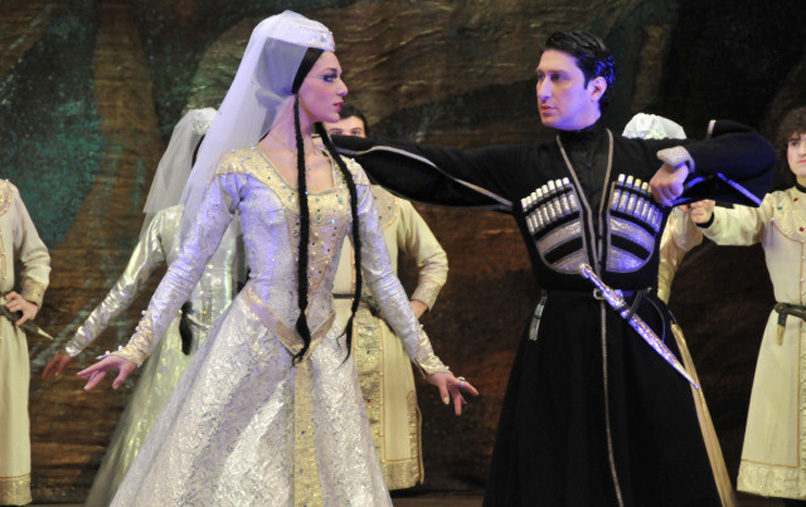
Kartuli is an elegant and romantic dance. It is the most popular dance in Georgia. In this dance the man must not touch the woman, even his costume should not touch her. The man keeps his arms opened and extended to call the woman whereas the woman keeps her eye downward gliding like a swan in a long white gown. There are five different parts in the dance. Firstly the man invites the woman to dance, next the woman joins the man and they dance together, at third the man dances alone, at fourth the woman dances alone, finally, to conclude, everyone in the group dance together. Since the man and the woman should not touch each other during the dance a very hard practice is needed. It is one of the most difficult dance forms among the Georgian traditional dances.
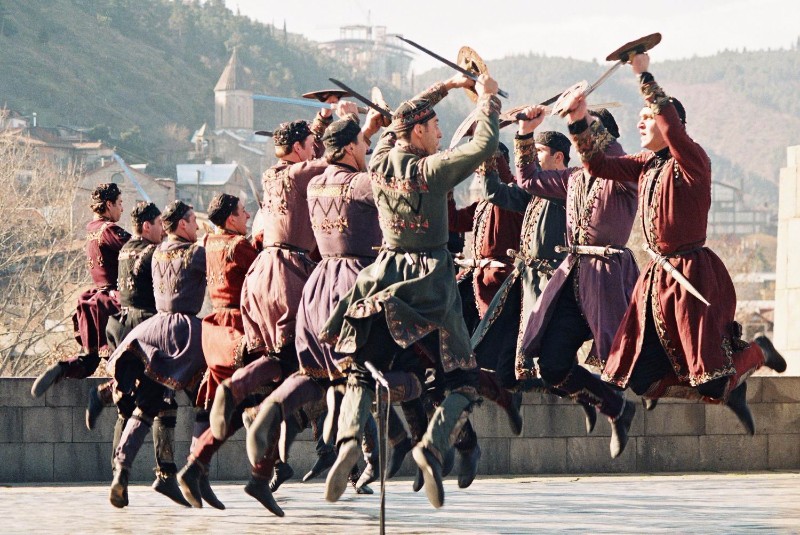
Khevsuruli is an important form of mountain dance in Georgia. It symbolises the love, courage, respect for woman, toughness, competition and skill. The theme of the dance is that a couple who are in love is disturbed by another man. Immediately a conflict starts between the two men and also their supporters. The fighting in the dance is done with sowrds and shields. The fierce battle comes to a stop when the women drop a small part of their clothes from their hands. Then the women clear the scene and after that the fight continues again. At the end the dance stops when the women drop a part of their clothes again. There is no conclusion of the dance and nobody knows if the dispute continues or it has come to the end. The dance needs good training in order to be performed without hurting the fellow dancers.
The other dance form is Davluri which is an elegant dance performed in pairs. This is simpler than the above dance. It's a kind of dance symbolising an aristocratic city.
Khorumi is a form of war dance that originated during the period when there was a frequent invasions of Georgia by the Mongolians, Ottamans, etc. During the show, up to thirty or forty dancers may perform together.
Suliko is the other form of Georgian dance which is also called Kokebi, which is the name of the jugs the women have in their hands during the dance. The jugs are used by them to catch water from the stream and to collect it. Particularly it is a slow dance which reflects the gracefulness of Georgian women.
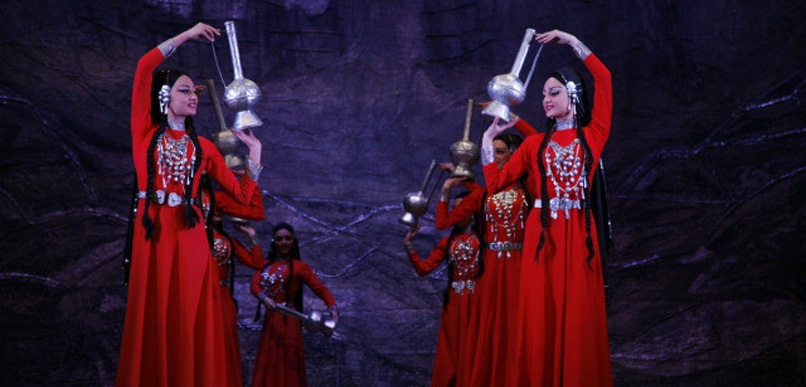
Khanjluri is another form of dance in Georgia which is also called the "shepherds dance". The dancers wear red costumes and they have white hair wigs. The dancers use daggers to fight with each other during the dance which symbolises the courage and the people's skill with daggers. The dancers also jump and perform some athletic stunts during the dance.
Acharuli is the dance form from the Adjara region which is near to Black Sea and where some important cities like Batumi and Poti are located. There is no strict rules in Acharuli dance like the kartuli dance.
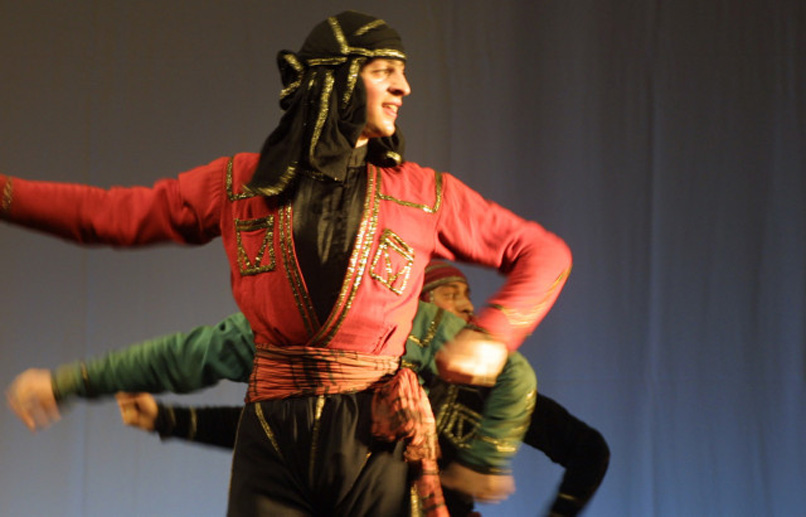
Mtiuluri is another dance which actually means 'Dance Festival' which resembles khevsuruli. There are some amazing stunts performed by the dancers in their red costumes. At first two men dance side by side and perform a variety of stunts competing with each other, followed by the women who dance and finally it ends by everyone dancing together.
WATCH VIDEOGeorgian Folk Music
Salamuri and Chonguri are Georgian traditional folk music instruments. You can see videos below to know how to play professional musicians on Salamuri and Chonguri.
WATCH VIDEOWATCH VIDEO
